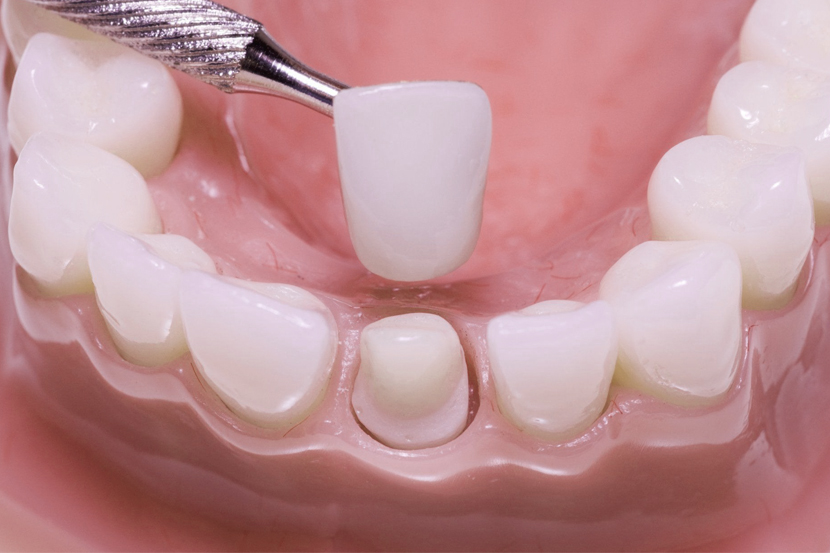
Know When to Visit the Dentist for a Dental Crown
Dental crowns play a vital role in restoring damaged teeth, improving aesthetics, and ensuring long-term dental health. If you’re experiencing dental issues or have concerns about the condition of your teeth, it’s important to recognize the signs that indicate a dental crown may be necessary.
Dr. Alex Clark, a trusted dentist in Prairie Village, is here to guide us through this informative journey.
Do You Need a Dental Crown?
Severe Tooth Decay or Cavities
- Pain or Tooth Sensitivity: If you experience persistent toothaches or sensitivity to hot or cold substances, it could indicate that the decay or cavity has reached the nerve of the tooth. In such cases, a dental crown may be necessary to protect the tooth and alleviate discomfort.
- Visible Signs of Decay: If you can see visible signs of decay, such as dark spots, holes, or pits on the surface of your tooth, it’s a clear indication that the decay has progressed significantly. A dental crown can help restore the tooth’s structure and prevent further damage.
Cracked or Fractured Teeth
- Pain When Chewing: If you experience pain or discomfort when biting or chewing, it could be a sign of a cracked or fractured tooth. The pressure applied during chewing can cause the crack to widen, resulting in pain. A dental crown can help stabilize the tooth and distribute the biting forces more evenly, reducing pain.
- Sensitivity to Temperature: Cracked teeth can be sensitive to hot or cold temperatures. If you feel a sharp, fleeting pain when consuming hot or cold substances, it may be a sign of a cracked tooth. A dental crown can provide protection and insulation, reducing sensitivity.
- Visible Cracks or Fractures: In some cases, you may be able to see visible cracks or fractures on the tooth. These cracks can vary in size and location, ranging from small surface cracks to more extensive fractures. A dental crown can cover and support the damaged tooth structure, preventing further propagation of the crack.
- Tongue or Cheek Irritation: If a cracked tooth has rough or jagged edges, it can irritate the tongue or inner cheek. You may experience discomfort or notice small cuts or sores in these areas. A dental crown can smooth out the surface of the tooth, eliminating irritation.
Large Fillings
- Failing or Deteriorating Filling: Over time, large fillings can weaken or deteriorate due to factors such as wear, recurrent decay, or fracture. If you notice that your filling is dislodged, cracked, or no longer providing proper coverage, a dental crown may be necessary to restore the tooth’s strength and function.
- Tooth Sensitivity: Large fillings can make the tooth more sensitive to hot or cold temperatures. If you experience increased sensitivity or discomfort when consuming hot or cold substances, it could be a sign that the filling is no longer adequately protecting the tooth. A dental crown can provide better insulation and reduce sensitivity.
Root Canal Treatment
Misshapen or Discolored Teeth
Dental Bridge Attachment
Cracked Enamel
- Visible Cracks or Lines: If you notice visible cracks or lines on the surface of your tooth enamel, it could be a sign of enamel damage. These cracks may be hairline or more significant, depending on the severity of the condition. A dental crown can help protect the cracked enamel and prevent further propagation of the cracks.
- Rough or Jagged Edges: Cracks in the enamel can create rough or jagged edges on the tooth surface. These rough edges can irritate the tongue, cheeks, or gums, leading to discomfort or soreness. A dental crown can smooth out the surface, improving comfort and preventing further irritation.
- Discoloration or Stains: Cracked enamel can sometimes result in discoloration or staining of the affected tooth. This occurs when food particles or pigments enter the cracks and become trapped, leading to noticeable changes in the tooth’s color. A dental crown can restore the tooth’s natural appearance and provide a seamless, uniform color.
Tooth Grinding (Bruxism)
- Worn or Flattened Tooth Surfaces: Bruxism can cause excessive wear on the tooth surfaces over time. If you notice that your teeth appear flat or have developed uneven wear patterns, it may indicate tooth grinding. A dental crown can restore the natural shape and structure of the teeth, protecting against further damage.
- Jaw Pain or Headaches: Bruxism can contribute to jaw pain, temporomandibular joint (TMJ) disorders, and headaches. If you frequently wake up with a sore jaw or experience recurring headaches, it may be due to the excessive grinding of your teeth. A dental crown, in combination with other treatments, can help alleviate these symptoms by improving the occlusal (bite) relationship.
- Tooth Mobility: Prolonged bruxism can lead to the loosening of teeth. If you notice that one or more teeth have become slightly mobile or feel loose, it could be a result of the excessive forces applied during grinding. Dental crowns can provide stability and support to the teeth, reducing mobility.
Dental Implant Restoration
Aesthetic Concerns
Choosing the Right Dental Crown
- Porcelain Crowns: These crowns are known for their natural appearance and are excellent for restoring front teeth. They can be color-matched to blend seamlessly with the surrounding teeth.
- Zirconia Crowns: Made from a durable and biocompatible material called zirconium dioxide, these crowns offer exceptional durability and resistance to chipping or cracking. Zirconia crowns are known for their translucent appearance.
- Metal Crowns: Made from metals like gold or silver alloy, metal crowns are durable and resistant to wear. However, their metallic appearance makes them more suitable for molars or teeth less visible when you smile.
- Porcelain-fused-to-metal (PFM) Crowns: These crowns combine the strength of metal with the aesthetic appeal of porcelain. They’re a popular choice for both front and back teeth.
Factors to Consider
- Longevity: Dental crowns are designed to be long-lasting, but the actual lifespan can vary depending on factors like oral hygiene, habits, and the material used. Discuss the expected longevity of different crown options with your dentist.
- Cost: The cost of dental crowns can vary based on factors such as the material chosen, the complexity of the procedure, and your location. Discuss the cost and payment options with your Location dentist.
- Appearance: If you have cosmetic concerns, such as front teeth that are visible when you smile, consider the aesthetic aspect of the crown. Porcelain or all-ceramic crowns are excellent options for a natural and pleasing appearance.
- Tooth Preparation: The extent of tooth preparation required for a dental crown can vary. In some cases, minimal preparation is sufficient, while in others, more significant reshaping may be necessary.
Frequently Asked Questions
Begin Your Journey to a Restored Smile with Dental Crowns
Understanding the signs you need a dental crown is crucial for maintaining optimal dental health and addressing dental concerns effectively. By recognizing the indications, considering the factors, and discussing your options with a dental professional, you can make an informed decision that aligns with your needs and goals.
Take the first step towards a healthy smile by contacting Dr. Alex Clark to schedule a consultation at our Prairie Village practice and learn more about how dental crowns can benefit you.

